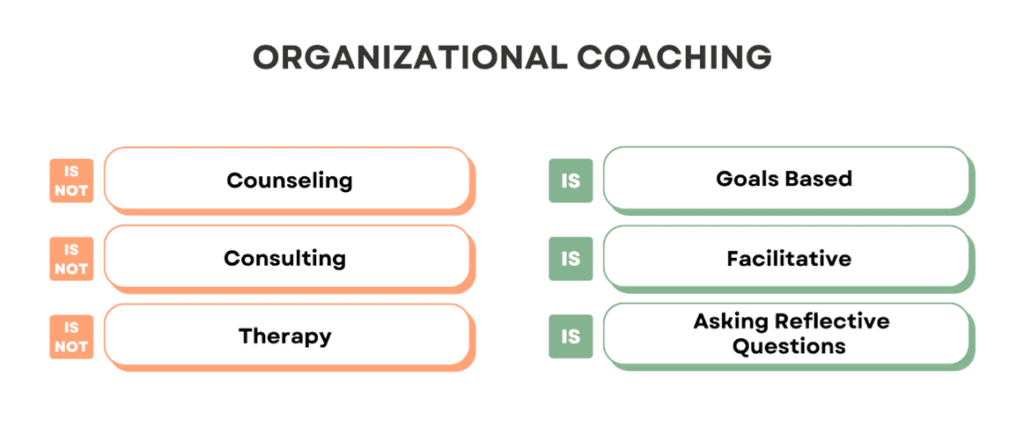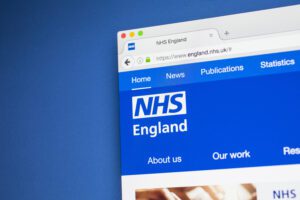Personalized learning paths: 'Choose your own adventure' L&D to drive resilience, engagement, and profit
- 5 Min Read
A learning model that allows for personalization maximizes an organization’s investment in people. Kimmie Hammett and Adam Hickman Ph.D. explains how a matrix structure and coaching support can provide tangible results for culture and business.
- Author: Kimmie Hammett and Adam Hickman
- Date published: Sep 8, 2023
- Categories

When Virtual Assistant Platform, Time Etc, collected employee feedback on what they wanted most from leadership, they found the top answers were autonomy and personal and professional development. Employees wanted to be able to direct themselves but also desired personalized learning paths built on coaching and growth.
The optics of these two items may seem contradictory. However, they are completely harmonious.
In response, Time Etc. took a drastic leap, wiping out their traditional leadership roles and hiring coaches. This replacement preceded a 20% jump in productivity on key metrics and placed the company in the top 1% of performers in Gallup’s Q12 Employee Engagement survey.
The role of coaches in personalized learning paths
This solution may seem like a wildcard, but its effectiveness has been proven. And the fix is one role – a coach.
Organizational coaches are different than what most believe. They are not therapists nor are they consultants. They are, however, facilitators that ask reflective questions and guide through effective goal realization.

Rather than relying on one path, coaches tailor solutions to the individual, help create the most effective development paths for the learner and place them in the right fit functions.
Without the reliance on an army of coaches, any organization can implement personalized learning paths with some flexible structure built on the front end and some support from the existing leadership. It helps to think of this process as writing a “choose your own adventure” book. As the authors, our heavy lifting starts in the planning.
HR, L&D, and People leaders need three factors to implement personalized learning paths.
1) Set up systems
To give your employees “guided autonomy”, create guidelines and systems like Goosebumps created “choose your own scare” novels. Use a matrix of interweaving activities that weave a seemingly endless potential of pathways toward various outcomes.
How do you write these journeys? It starts with the outcomes in mind. The outcomes are the various roles and functions within the organization that make the mission happen. You then break these down into the elements that make it possible. These elements are the skills, knowledge, and abilities needed.
Competency matrices allow an organization to define the elements needed to perform in various roles and build a bank of learning activities and experiences that have been proven to develop those competencies. This is not a path but a web. One training or activity may touch on multiple competencies, and one competency will have multiple options for development. This is what creates options for the employee.
2) Empower the employee
Engagement indicators hinge on factors of an employee’s strengths and goals being a part of the organization’s strengths and goals.
Gallup research shows that employees who get to do what they do best and who the organization enables to determine how they do work are more likely to achieve the results the organization desires. This applies the same to learning and development.
The competency matrix sets parameters and various channels provide the resources. Allowing employees to make decisions on how they build the skills they need maximizes the productivity of their natural talents. Instruct the employees upfront on how to use the guidance and resources available to them, but it is up to them to work through their development activities, raise their hand when needed, and determine how to best lean on their talents for growth.
There will be similarities, but their stories won’t look the same. Two employees with similar goals may select different development activities to work toward them. Two employees with very different goals could reach them with some overlapping activities. The employees hold their books.
3) Intersect at key turning points
You do not place the decision points of every “Choose your own adventure” randomly but intentionally at impactful story plot points. In development, some side stories inform but don’t determine outcomes, and there are key turning points.
Leaders need to be ready to interject at these key turning points in their careers to provide support and guidance toward the goals ahead. Consistent development conversations and check-in will help to spot the signs in real time when it is necessary to step in. This will look like a need to shift goals, whether due to a change in personal or organizational priorities or when an employee realizes a goal and they naturally think about the next chapter.
Coaching the employee through how their goals and strengths best fit into the organization’s goals and providing them with feedback on what they need to reach an intersection of those goals keeps the employee engaged and builds a best-fit bench strength for the needs ahead.
The paradoxical path forward: Personalized learning paths that impact culture
In our current era, we face the frustrating paradox of wanting one simple answer and a deep understanding that one size does not fit all. This is increasingly true as the climate only continues to get more complicated. The very responses from the Time Etc. employees exemplify this. They desired both autonomy and direction.
According to McKinsey research, organizations that report a balanced Performance and People culture “achieve results by hiring and developing talented people and by creating the right conditions to unleash their potential…. This combination seems to strike a balance between giving employees autonomy and providing structure, expectations, and guardrails to channel their efforts effectively in support of business goals.”
These results show organizations that invest in developing their talent are more resilient, and profitable, and track higher engagement. A coaching approach that personalizes development maximizes the return on this investment. As changes and challenges continue to fire at us rapidly, these forces will be key to remaining upright.









